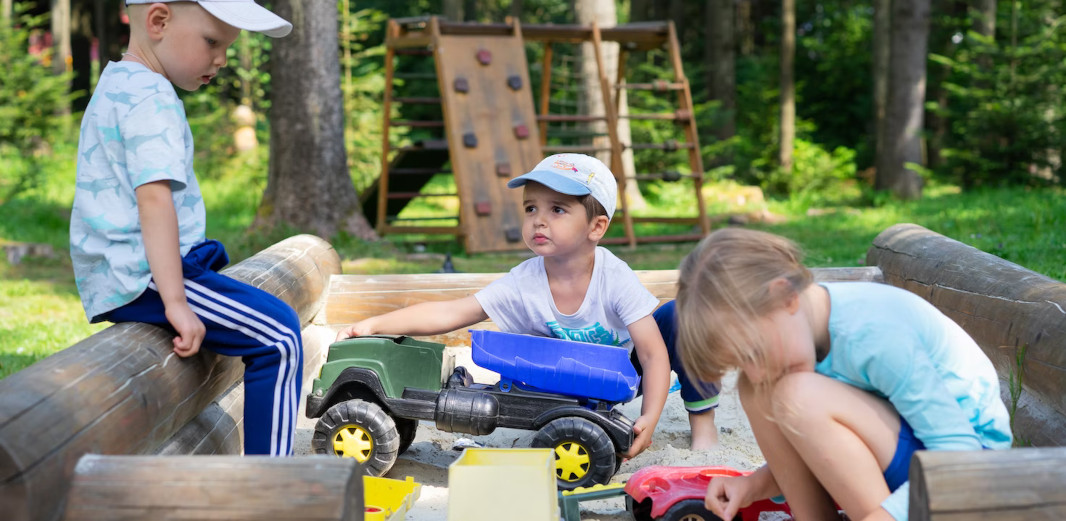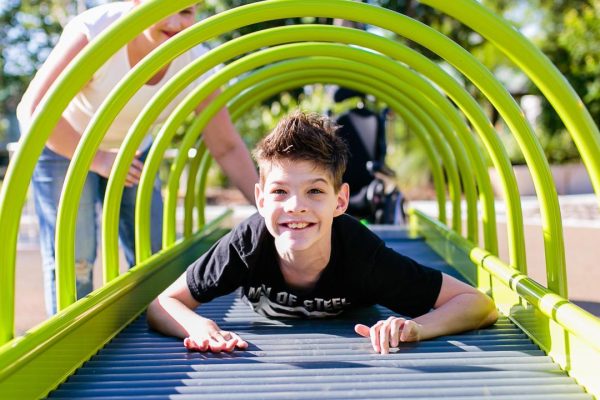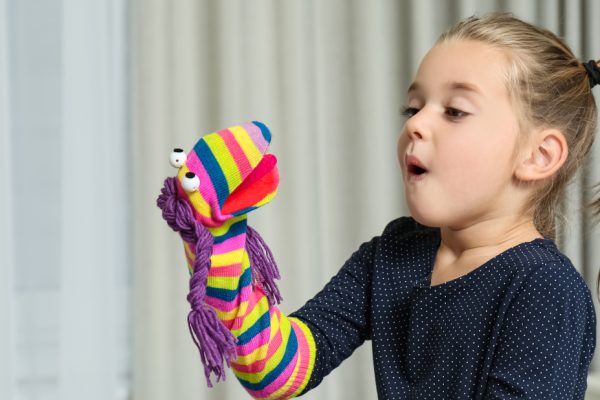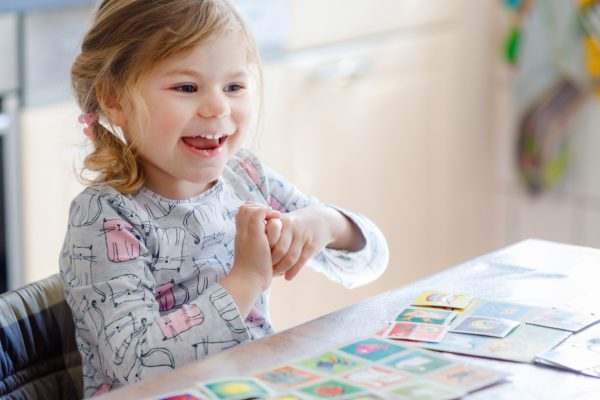
Discover 5 ways parallel play can benefit your child
by Samantha Berger, MS, OTR/L and edited by Alice Lockwood
In 1929, Mildred Parten established the six stages of play through which children progress during their first five years. Parallel play is the fourth stage of play according to Parten. It is a significant stage for toddlers (2+ years of age), following “onlooker play” during which children observe other’s playing and preceding “associative play” during which children demonstrate increased interest in their play partner.
What is Parallel Play?
Parallel play is defined as children playing independently in the same area, with the same materials, but with minimal engagement with one another. While it may appear that our children are playing completely independent of one another, in actuality they are being very observant. At this stage, the child is becoming increasingly aware of the presence of their peers. They acknowledge with increasing interest that their peers are playing similarly to them and will begin to imitate based on this peer modelling.
5 Benefits of Parallel Play
As outlined below, during parallel play, children are exposed to opportunities for growth in several domains, expanding beyond just play.
1. Gross and Fine Motor Development
As the child begins to imitate his peers, they are trialling both gross and fine motor skills outside of their current play repertoire, thereby expanding on their current skill set.
2. Building Trust
Up until this point, the majority of the child’s socialisation has likely taken place in the home and with adults. The emergence of parallel play skills supports the child’s ability to overcome fear and mistrust associated with being outside of the home. The child has the freedom to engage in play and determine the level of interaction that feels most safe.
3. Empathy
The child is not only observing how their peers play, but also how they act and feel. Through play, the child begins to understand the cause-and-effect relationship of actions and emotions. For example, if a child stacks his tallest block tower and celebrates this success, a peer engaged in parallel play will likely learn to take part in the excitement, clapping or cheering. Likewise, if the child’s tower is knocked down and the builder cries in disappointment, there is a good chance that a peer engaged in parallel play will likely begin to cry as well, sharing in the upset.
4. Sharing and Setting Boundaries
Children are now sharing play materials and physical space. In their time observing their peers, the child will undoubtedly demonstrate interest in another’s toys. While it is not expected that children at this stage will cooperatively share with one another, the child is becoming more aware of himself in the context of others. Likewise, the child is determining what amount of space he feels comfortable playing and what amount of space begins to feel like an encroachment. For both space and materials, children learn what makes them feel comfortable and the need to assert themselves to maintain this comfort.
5. Language Development
Not only will a child’s intrinsic desire to imitate peers contribute to language development, but additionally the child will now feel the need to assert his wants and needs in the context of others. They can no longer depend on their caregiver to know exactly what they need at any given time. They are now expected to communicate with those around them. Don’t be surprised if your child learns to say an assertive “mine” as they gain an understanding of sharing during this stage.
Creating Environments to Encourage Parallel Play
At NAPA, understanding stages of play development greatly informs the therapeutic intervention across departments and is a significant consideration of our early intervention centre-based program. At home, understanding stages of play can help caregivers create an environment conducive to the growth of play skills. Children are constantly observing and learning from their environment; therefore, caregivers constantly have the opportunity to set a good example by engaging in play, narrating events and exposing them to different settings and people.
This post was originally published on the NAPA blog here and is republished with permission.
NAPA Centre provides both traditional and non-traditional therapies as recommended by professionals from around the world. They specialise in offering three-week intensive therapy programs tailored to each of our patient’s individualised needs. By utilising a wide variety of therapies and techniques they are able to target the unique goals of each of their families. Find out more at napa.com.au







